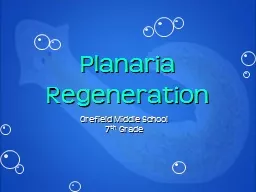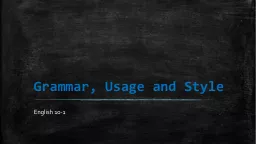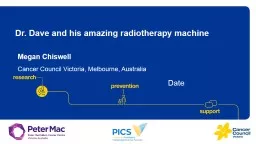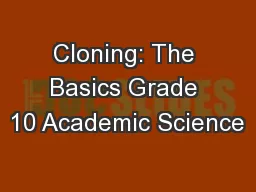PPT-Planaria and their amazing ability to regenerate!
Author : violet | Published Date : 2023-05-26
Planaria Background Planaria belongs to Kingdom Animalia Phylum Platyhelminthes flat worms Class Turbellaria Order Seriata and Family Planariidae They
Presentation Embed Code
Download Presentation
Download Presentation The PPT/PDF document "Planaria and their amazing ability to re..." is the property of its rightful owner. Permission is granted to download and print the materials on this website for personal, non-commercial use only, and to display it on your personal computer provided you do not modify the materials and that you retain all copyright notices contained in the materials. By downloading content from our website, you accept the terms of this agreement.
Planaria and their amazing ability to regenerate!: Transcript
Download Rules Of Document
"Planaria and their amazing ability to regenerate!"The content belongs to its owner. You may download and print it for personal use, without modification, and keep all copyright notices. By downloading, you agree to these terms.
Related Documents














